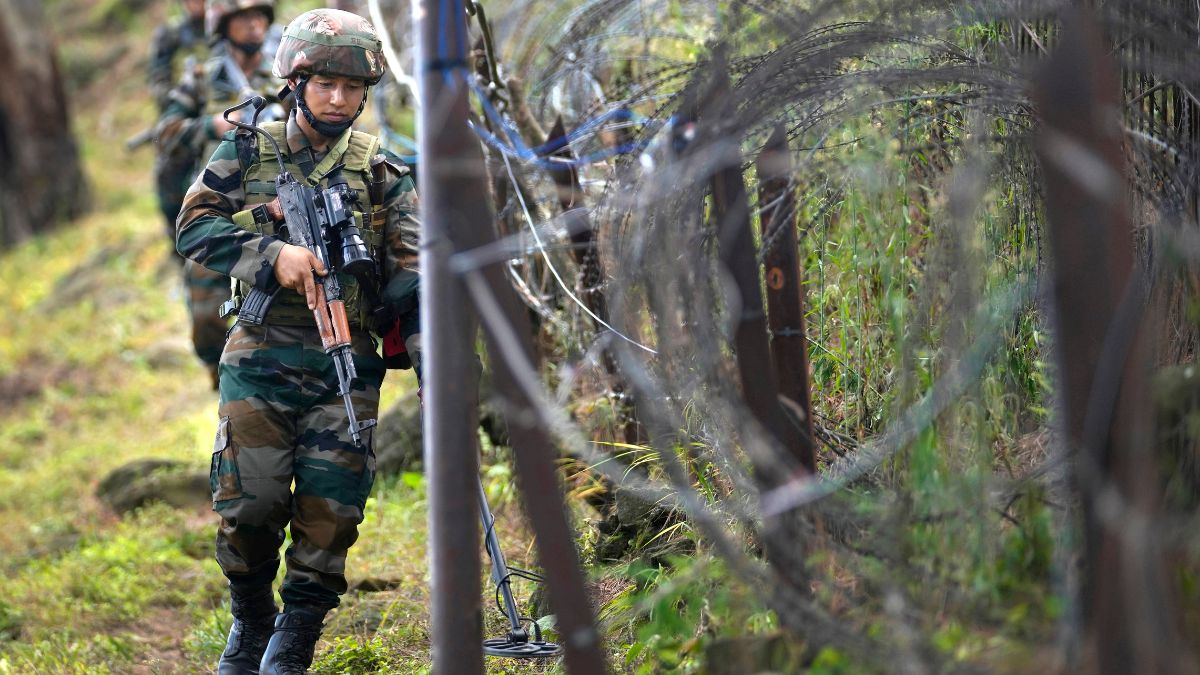Secret police are a quintessential feature of authoritarian regimes.
From Azerbaijan’s State Security Service to Zimbabwe’s Central Intelligence Organisation, these agencies typically target political opponents and dissidents through covert surveillance, imprisonment and physical violence.
In contrast to the regular police and armed forces, secret police primarily use preemptive repression to thwart threats to the government.
In Nazi Germany, for example, Gestapo informants penetrated all levels of society, producing an atmosphere of distrust among those against Adolf Hitler. In Uganda, Idi Amin’s State Research Bureau employed sophisticated spying equipment and intercepted mail at the post office to root out supposed saboteurs.
In Syria, Bashar al-Assad relied on the General Intelligence Directorate to oversee a network of torture centres. And in Venezuela, Nicolás Maduro has used the Bolivarian National Intelligence Service (Sebin) to spy on opponents overseas, often running operations out of diplomatic missions.
Since US President Donald Trump took power in January, Immigration and Customs Enforcement (Ice) has become a far more visible and fearsome force on American streets.
Though Ice is ostensibly still bound by constitutional limits, the way it has been operating bears the hallmarks of a secret police force in the making.
As an expert on authoritarian regimes, I’ve studied historical and contemporary secret police forces extensively across Africa, Asia and Europe.
They typically meet five criteria:
They’re a police force targeting political opponents and dissidents
They’re not controlled by other security agencies and answer directly to the dictator
The identity of their members and their operations are secret
They specialise in political intelligence and surveillance operations
They carry out arbitrary searches, arrests, interrogations, indefinite detentions, disappearances and torture.
How close is ICE to becoming a secret police force? Let’s consider each of these criteria.
Grabbing dissidents off streets
Ice has used the pretext of combating antisemitism to target dissidents. A branch of the agency previously used to target drug smugglers and human traffickers has reportedly been directed to scan social media for posts sympathetic to Hamas.
On March 8, Ice arrested the prominent pro-Palestinian activist Mahmoud Khalil, a legal resident. It was a similar story for Rumeysa Ozturk, a university student grabbed off the street on March 25 by Ice agents.
Trump has cited the Immigration and Nationality Act of 1952 as the legal pretext for Ice’s actions in these cases and others. The law allows the US government to deport anyone whose presence has “adverse foreign policy consequences” for the country.
Because Khalil and others are being targeted for their activism, legal scholars say the government appears to be “ retaliating” against constitutionally protected free speech it disagrees with.
Demonstrators gather near an Ice office in New York to protest against Khalil’s arrest. Sarah Yenesel/EPA
Loyalty to one man
While Ice does not report directly to Trump, the agency is controlled by people who have shown intense loyalty to him.
Ice is part of the Department of Homeland Security, which is overseen by stalwart Trump ally Kristi Noem. She is supported by Tom Homan, a former Ice director who Trump appointed as his “border czar” in November 2024.
Despite a court order barring the deportations of alleged Venezuelan gang members to a prison in El Salvador, Homan has remained defiant:
We are not stopping. I don’t care what the judges think.
The pertinent question now is whether Noem or Homan would refuse to follow a dictate from Trump in the face of a direct court order.
Operating in the shadows
Ice agents are increasingly operating in secret. The individuals who took Ozturk off the street in a widely shared video claimed to be police officers, even though they were in plain clothes and face masks.
Similarly, Ice agents in plain clothes detained two men during a raid on a courthouse in Charlottesville, Virginia, on April 22. When two bystanders asked to see a warrant, they were ordered not to “impede” the agents’ lawful duties. Ice later said the two women would be prosecuted.
Also last week, Ice agents attempted to arrest a man at a Wisconsin courthouse without a warrant. After a judge intervened, she was arrested herself by the FBI and charged with two felonies.
This shroud of opacity has been accompanied by an end to local agency liaison meetings aimed at helping people seek answers to Ice’s actions.
Surveillance gathering
Ice is organised into two distinct law enforcement components, giving it both political intelligence gathering and surveillance capabilities.
Its Homeland Security Investigations arm includes an intelligence division, while its Enforcement and Removal Operations arm uses third-party companies such as Geo Group, Giant Oak, and Palantir to conduct mass surveillance.
Most worryingly, Ice is trying to procure greater intelligence and surveilla I’m sure you are nce capabilities by soliciting pitches from private companies to monitor threats across the internet.
According to a procurement document, contractors would be directed to focus on the backgrounds of social media users and use facial recognition capabilities to gather information on people. Criticisms of Ice itself would be monitored, too.
Arbitrary searches, arrests, and detentions
There has been a stream of reports exposing how Ice is conducting arbitrary searches, arrests, interrogations, and indefinite detentions.
Some of the most egregious reported examples include:
Entering primary schools under false pretences in search of undocumented students
Carrying out “ collateral arrests”, that is detaining people not previously identified as targets during operations
Detaining tourists and visa holders for weeks for unknown reasons
Disappearing US citizens without any meaningful process.
Since Trump’s inauguration, at least three people have died in Ice detention facilities, the latest in a string of fatalities in recent years.
Prolonged solitary confinement is reportedly widespread. UN experts say this can amount to torture.
Worst yet to come
Overall, the evidence shows Ice meets most of the criteria for being a secret police force. It has yet to target political opponents, which I define narrowly as members of the Democratic Party. And it is not directly controlled by Trump, although the current structure provides him with plausible deniability.
While the agency is far from resembling history’s most feared secret police forces, there have so far been few constraints on how it operates.
The worst may be yet to come. A budget bill making its way through Congress would provide Ice with up to $175 billion in funding over the next decade. (Its current annual budget is $9 billion) This would supercharge its use of surveillance, imprisonment and physical violence.
When combined with a potential shift towards targeting US citizens for dissent and disobedience, Ice is fast becoming a key piece in the repressive apparatus of American authoritarianism.
Associate Professor, School of Government and International Relations, Griffith University
This article is republished from The Conversation under a Creative Commons license. Read the original article.


)
)
)
)
)
)
)
)
)